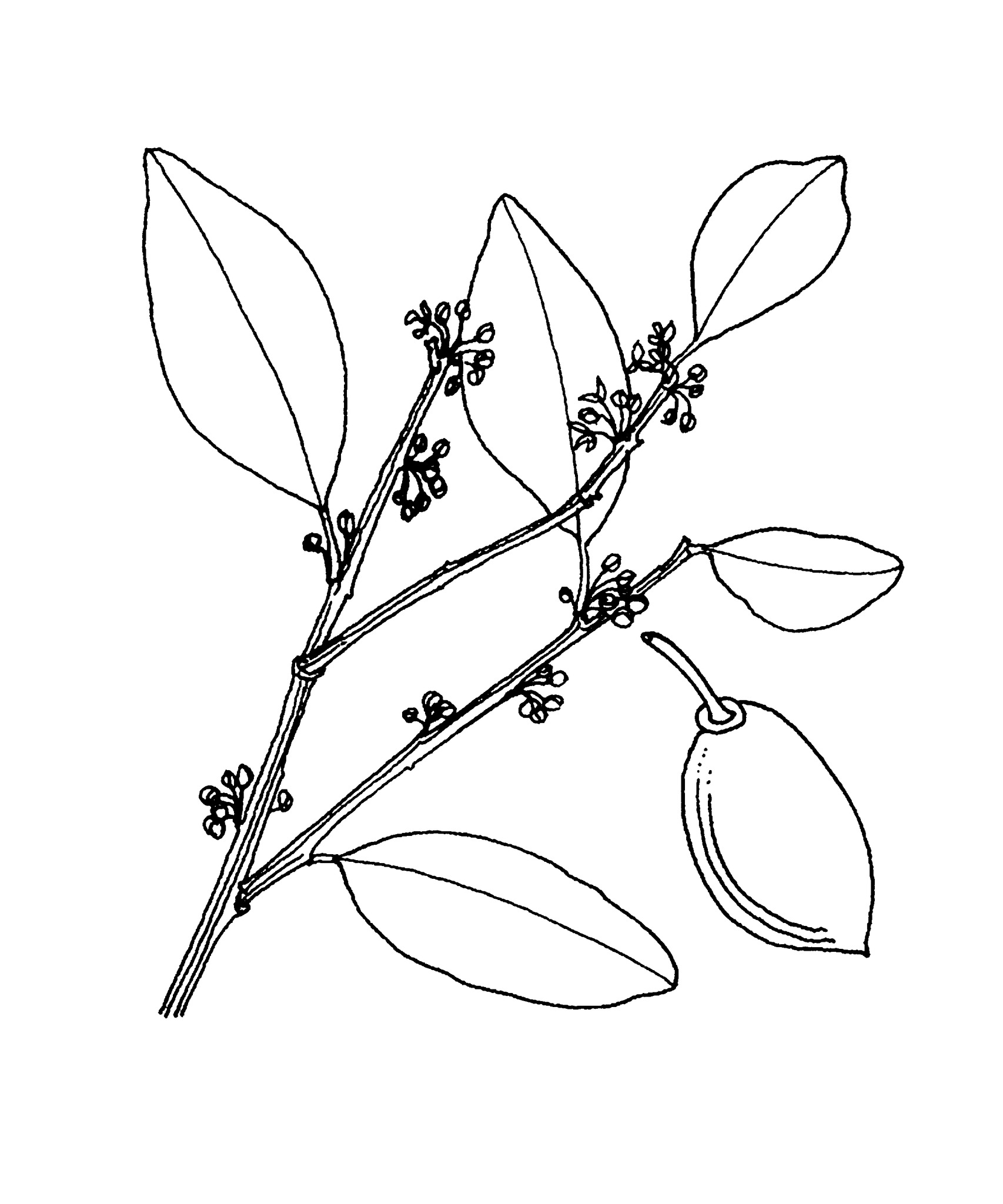
From the Greek drupetes, meaning fully ripe.
Shrubs or trees, deciduous or evergreen, perennial, male and female flowers usually on separate plants; stems and foliage without latex. Indumentum of simple,multicellular hairs. Stipules entire, inconspicuous, soon shed. Leaves alternate, stalked to stalkless, unlobed, penninerved, without glands; margins entire to scalloped or saw-toothed. Inflorescences terminal or axillary, racemose, spike-like or solitary, generally unisexual, with flowers in bracted clusters. Male flowers stalked; sepals 4 or 5, overlapping, hooded; petals absent; disk cup-shaped, more or less entire, lobed or laciniate; stamens 3-50, filaments free and attached to slightly convex receptacle. Female flowers stalked; sepals 4 or 5, overlapping, hooded; petals absent; disk hypogynous, annular, cup-shaped, of several lobes or rarely more or less absent; ovary 1-4- chambered, ovules 2 per chamber; styles 3, stigmas free, divided into 2 or entire. Fruits drupaceous, indehiscent, 1-, 2- or 3-lobed, surface smooth. Seeds oblong to ovoid; ecarunculate.
Pantropical with about 200 species. Australia has 4 species, 1 species commonly cultivated.
Seeds. Tolerant of mild frosts.
Shrubs; fruits drupaceous, hard-fleshy, yellow to orange-red. Juvenile leaves often toothed.
Forster (1997a).
Source: (2002). Euphorbiaceae. In: . Horticultural Flora of South-eastern Australia. Volume 3. Flowering plants. Dicotyledons. Part 2. The identification of garden and cultivated plants. University of New South Wales Press.
